
|
You entered: disk
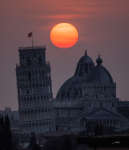 Leaning Tower, Active Sun
Leaning Tower, Active Sun
1.04.2022
The natural filter of a hazy atmosphere offered this recognizable architecture and sunset view on March 27. Dark against the solar disk, large sunspots in solar active regions 2975 and 2976 are wedged between the Duomo of Pisa and its famous Leaning Tower.
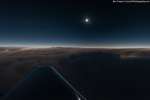 Eclipse at 44 000 Feet
Eclipse at 44 000 Feet
7.11.2013
Timing was critical to catch this image of November 3rd's solar eclipse. But flying at 44,000 feet, intrepid eclipse chasers on a chartered jet traveling 500 miles per hour managed to intercept the the Moon's shadow. The remarkable flight made a perpendicular crossing of the central shadow track.
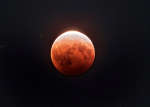 Total Lunar Eclipse from Sydney
Total Lunar Eclipse from Sydney
28.05.2021
The reddened shadow of planet Earth plays across the lunar disk in this telescopic image taken on May 26 near Sydney, New South Wales, Australia. On that crisp, clear autumn night a Perigee Full Moon slid through the northern edge of the shadow's dark central umbra.
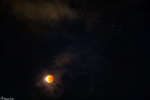 An Almost Total Lunar Eclipse
An Almost Total Lunar Eclipse
20.11.2021
Predawn hours of November 19 found the Moon in partly cloudy skies over Cancun, Mexico. Captured in this telephoto snapshot, the lunar disk is not quite entirely immersed in Earth's dark umbral shadow during a long partial lunar eclipse.
 The Milky Way in Infrared
The Milky Way in Infrared
29.12.1997
At night, from a dark location, part of the clear sky looks milky. This unusual swath of dim light is generally visible during any month and from any location. Until the invention of the telescope, nobody really knew what the "Milky Way" was.
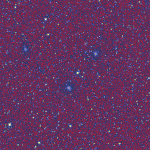 Abell 3627 in the Great Attractor
Abell 3627 in the Great Attractor
18.02.1996
Are these galaxies near the center of the largest gravitationally bound concentration of mass yet known? Previously, the cluster of galaxies known as Abell 3627 was largely unstudied because dust in the disk of our own Galaxy obscured much of its light.
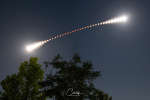 A Digital Lunar Eclipse
A Digital Lunar Eclipse
19.05.2022
Recorded on May 15/16 this sequence of exposures follows the Full Moon during a total lunar eclipse as it arcs above treetops in the clearing skies of central Florida. A frame taken every 5 minutes by a digital camera shows the progression of the eclipse over three hours.
 Tychos Supernova Remnant in X ray
Tychos Supernova Remnant in X ray
7.03.1999
How often do stars explode? By looking at external galaxies, astronomers can guess that these events, known as a supernovae, should occur about once every 30 years in a typical spiral galaxy like our MilkyWay.
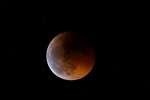 Eclipsed Moonlight
Eclipsed Moonlight
21.06.2011
A celestial prelude to today's solstice, the June 15 total lunar eclipse was one of the longest in recent years. It was also one of the darkest, but not completely dark. Even during...
 Zodiacal Light and the False Dawn
Zodiacal Light and the False Dawn
16.01.2012
Is it dawn or false dawn? During certain times of the year, the horizon near the rising Sun will begin to glow unusually early. This early glow does not originate directly from the Sun, but rather from sunlight reflected by interplanetary dust.
|
January February March April May June July |
|||||||||||||||||||||||||||||||||||||||||||||||||